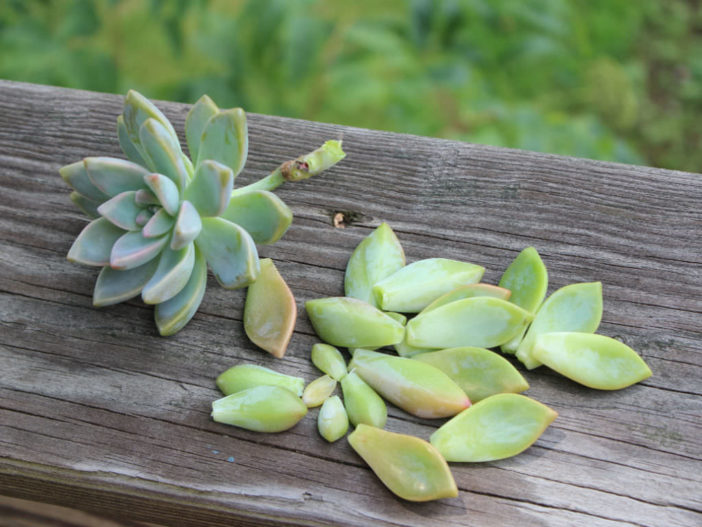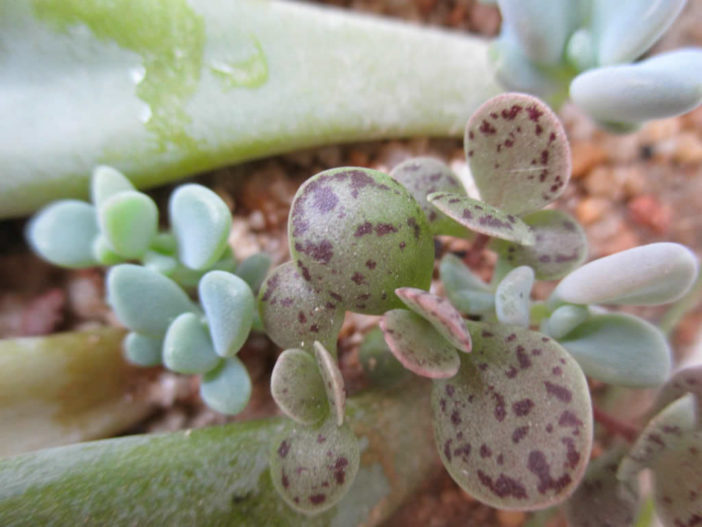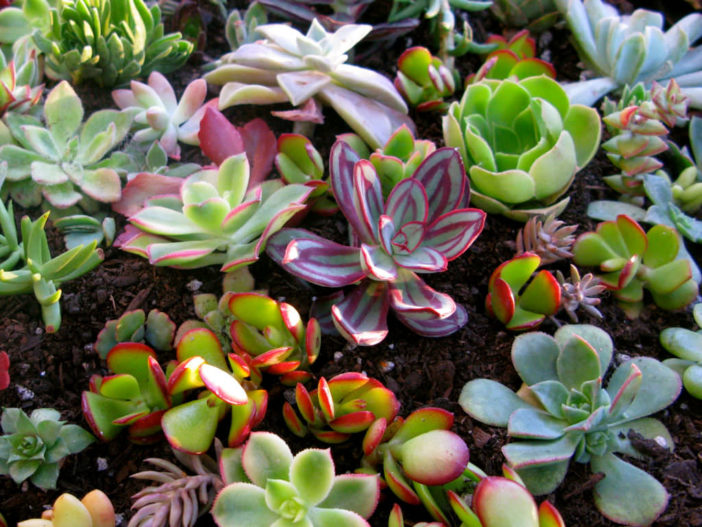Succulent plants are as lovely as they are easy to grow. The best part is that its leaves and stem provide endless identical plants through simple propagation. Growing succulents from clippings is both fun and rewarding. They quickly grow with minimal effort, and the resulting plants make great gifts and lively home decor. A well-clipped leaf or stem is practically all a gardener needs to grow an entirely new succulent with success.
Propagating from a Leaf Clipping
Removing a succulent leaf from a healthy plant without disrupting its appearance or hindering its growth is easy. Also, when a succulent has grown "leggy," with a long stem that some growers dislike, they can separate each of the many leaves and grow them into new plants.

Prepare the Soil
Prepare a new pot or tray of succulent soil mix that provides good drainage. A mixture of equal parts commercial potting mix for succulents and perlite works well. It does not need to be more than a couple of inches deep for the beginning stage. An aluminum baking pan works well for propagating several new plants at once.
Clip or Pluck a Leaf
You can pluck succulent leaves from an existing plant by hand or cut them with a metal tool. A sharp knife, razor blade, or pruning shears work well. It is important to sterilize a metal tool first to prevent infection in the plant or leaf. Cut as close to the stem as possible, and avoid bruising the leaf or stem. To pluck by hand, rock the leaf gently from side to side until it comes loose. Some leaves loosen very easily, which makes hand-plucking a popular method.
Let the Leaves Dry
Lay the fresh leaf cuttings down flat on the surface of the soil mix, and place the container in bright, indirect sunlight. Let the leaves dry out for a few days before adding any water. This is an important step because watering them immediately can easily cause them to rot. It also allows time for the "wound" from cutting to callous over, preventing the disease from sinking in.
Let Roots Develop
Once they have sufficiently dried and calloused, some people moisten the soil regularly, while others give the leaves more time to grow on their own. In humid environments, the leaves may not require any water at all. It is a good idea to water sparingly but consistently in a dry climate or a house with dry air conditioning. An effective method is to add a sprinkle of water to the pot whenever the soil has completely dried out. After a few weeks to a month, tiny roots and possibly the leaves of a new baby plant emerge from the leaves cut end.
Help the Roots Find the Soil
Sometimes the roots grow down into the soil on their own, and sometimes they grow into the air and need a little help. In the latter situation, form a small divot in the soil and gently cover the roots with a tiny layer of soil. Use a spray bottle to add a light spritz of water about once a week from this point.

Separate and Enjoy
You should see new growth on the planted cutting within about a month or so. At this point, it is safe to place each in its own pot or mix them into an arrangement for a garden setting. Once a succulent reaches maturity, it only needs regular watering.
Propagating from a Stem
When a succulent plant gets leggy from lack of light, an easy method for salvaging the plant is to "behead" it and propagate new plants from the head and the stem. This process is identical to propagating from leaf cuttings.

Cut the rosette off the top with a sterile instrument, and let the cutting dry and callous. Water sparingly until roots emerge, and then simply let nature take its course. The remaining stem should grow new plantlets on its own. You can then cut and propagate these as well.
Source: ebay.com
Links
- Succupedia: Browse succulents by Scientific Name, Common Name, Genus, Family, USDA Hardiness Zone, Origin, or cacti by Genus
